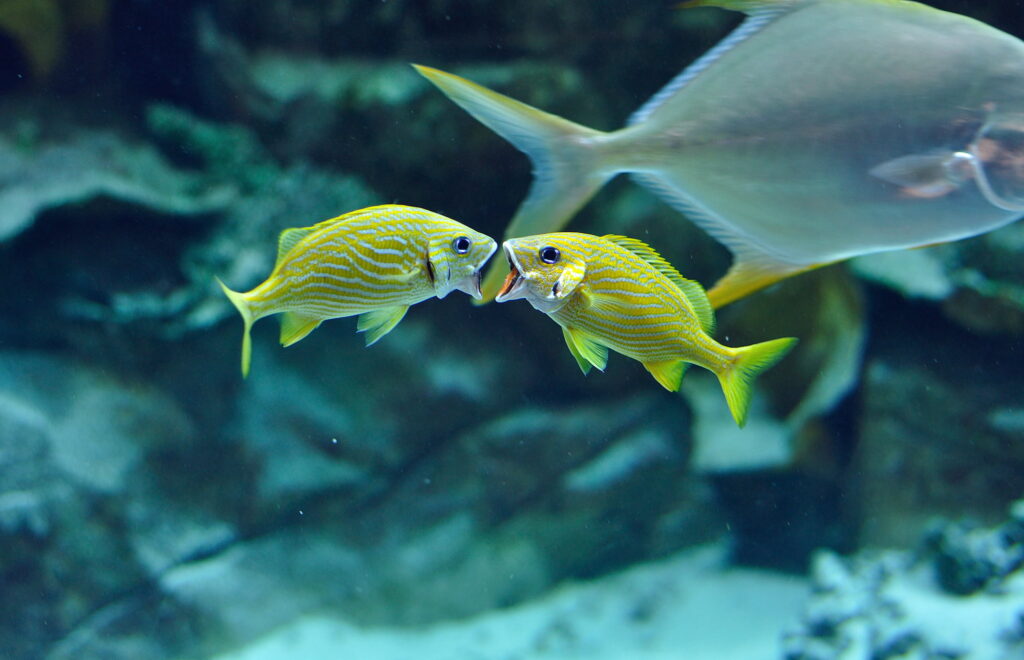Fish are among the oldest and most diverse creatures on Earth. They live in almost every water body, from the deepest oceans to shallow rivers and even underground caves. These fascinating animals come in all shapes and sizes, playing a vital role in aquatic ecosystems and human life. But what exactly makes a fish a fish? Let’s dive into their world and explore their characteristics, classification, survival techniques, and importance.
What Defines a Fish?

Fish are vertebrates, meaning they have a backbone. Unlike mammals, birds, reptiles, or amphibians, fish are adapted to life underwater and breathe using gills instead of lungs. Most fish have scales covering their bodies and use fins for movement. Unlike warm-blooded animals, fish are cold-blooded (ectothermic), meaning their body temperature changes with the surrounding water.
Main Characteristics of Fish

Every fish shares some common features that make them unique from other animals. These include:
1. Gills for Breathing
Instead of lungs, fish have gills that extract oxygen from the water. As water flows over the gills, oxygen enters the bloodstream, and carbon dioxide is expelled. This efficient breathing system allows fish to survive entirely underwater.
2. Fins for Swimming
Fish use their fins for movement, steering, and balance. Different fins serve different purposes:
- Pectoral fins (on the sides) help with direction and stopping.
- Dorsal fins (on the back) provide stability.
- Caudal fins (tail fins) help with propulsion and speed.
3. Scales for Protection
Most fish have scales that protect their bodies from predators, parasites, and rough surfaces. The type of scales varies among species, with some being smooth and others having sharp edges. Some fish, like catfish, lack scales entirely and have protective skin instead.
4. Cold-Blooded Nature
Fish do not regulate their body temperature like mammals do. Instead, their body temperature changes according to the surrounding water, which is why some species thrive in warm tropical waters while others prefer icy Arctic seas.
5. Backbone and Skeletal System
All fish are vertebrates, meaning they have a spinal column. Their skeletons can be made of either bone or cartilage, depending on the type of fish.
Types of Fish

Fish are classified into three major groups based on their skeletal structure and evolutionary history:
1. Bony Fish (Osteichthyes)
This is the largest group of fish, including over 30,000 species. Bony fish have a skeleton made of bone, a swim bladder (to control buoyancy), and gill covers. Examples include:
- Salmon – Known for long-distance migrations.
- Tuna – A fast swimmer and a popular seafood.
- Goldfish – A common pet found in aquariums.
2. Cartilaginous Fish (Chondrichthyes)
These fish have skeletons made of cartilage instead of bone. Their bodies are more flexible, and they lack swim bladders. Instead, they rely on their liver’s oil content for buoyancy. Examples include:
- Sharks – Top predators in the ocean.
- Rays and Skates – Flat-bodied fish that glide along the ocean floor.
- Chimaeras – Deep-sea fish related to sharks.
3. Jawless Fish (Agnatha)
These are the most primitive fish, lacking jaws and paired fins. Instead of biting, they use suction-like mouths to feed. Examples include:
- Lampreys – Parasitic fish that attach to other fish to suck blood.
- Hagfish – Produces slime as a defense mechanism.
How Fish Survive in Water

Fish have evolved unique adaptations that allow them to thrive in different aquatic environments.
1. Respiration
Fish draw in water through their mouths and push it over their gills, where oxygen is absorbed. Some fish, like lungfish, have developed the ability to breathe air when water conditions become unsuitable.
2. Buoyancy Control
Most bony fish have a swim bladder, an air-filled organ that helps them float at different depths without constantly swimming. Cartilaginous fish (like sharks) lack this and must keep moving to stay afloat.
3. Defense Mechanisms
To protect themselves from predators, fish use various defense strategies, such as:
- Camouflage – Many fish, like flounders, change colors to blend with their surroundings.
- Spines and Poison – Fish like lionfish have venomous spines to deter predators.
- Schooling Behavior – Some fish travel in large groups to confuse predators.
The Role of Fish in Nature and Human Life

1. Importance in the Ecosystem
Fish play a critical role in aquatic food chains. They help maintain population balance by feeding on algae, insects, and smaller fish while serving as prey for larger animals like dolphins, birds, and humans.
2. Economic and Cultural Significance
Fishing is a major industry worldwide, providing food, employment, and economic support for millions of people. Certain fish also hold cultural and religious importance in various societies.
3. Pets and Aquariums
Many people keep fish as pets, enjoying the beauty of colorful species like bettas, guppies, and angelfish. Fishkeeping also helps people understand aquatic life and conservation efforts.
Fun Facts About Fish

- The whale shark is the largest fish in the world, growing up to 60 feet long!
- Clownfish live among sea anemones and are immune to their stings.
- Electric eels can generate electricity strong enough to stun prey or defend themselves.
- Some fish, like the parrotfish, create a mucus cocoon around themselves at night to protect against predators.
- The coelacanth, once thought to be extinct, was rediscovered in 1938 and is considered a “living fossil.”
Conclusion
Fish are among the most diverse and fascinating animals on the planet. They have adapted to life in water in incredible ways, from breathing through gills to using camouflage for survival. With over 33,000 known species, fish continue to be an essential part of nature and human life. Whether in the wild, on our plates, or in aquariums, these amazing creatures remind us of the vast and mysterious world beneath the water’s surface.

Alexander Smith is an accomplished blogger with years of experience in crafting engaging and insightful content. Known for his expertise and passion for storytelling, Alexander brings a unique perspective to Fascinate Names, captivating readers with his thoughtful analysis and fresh ideas. His extensive background in digital media and writing makes him a valuable voice in the blogging community.







